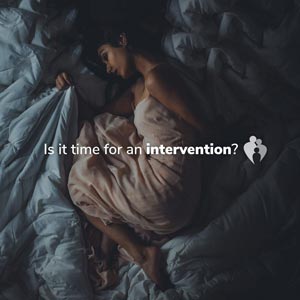Substance abuse is becoming more dangerous with the passage of time. The introduction of synthetic drugs makes the situation more dangerous than ever before. In decades passed, drug abuse was a gradual downward spiral. As people took more drugs, the effects would become dangerous over time. Synthetic drugs are disrupting this process, creating dangerous circumstances even after one use. Teens are especially vulnerable to synthetic drugs and can unintentionally overdose from one-time experimental use. Synthetic marijuana is becoming increasingly common among teenagers, creating a huge public health concern.
What Is Synthetic Marijuana?
Marijuana in its natural form is not dangerous and does not present the chance of overdose. Synthetic marijuana is much scarier, as no one knows what ingredients the substance may contain. Also known as K2 or Spice, synthetic marijuana can contain up to 100 different chemicals sprayed onto dried marijuana. The addition of chemicals makes the drug more like cocaine and heroin than marijuana. Calling the drug synthetic marijuana is somewhat misleading, as to some it may denote a safer drug.
Asia is the biggest producer of synthetic marijuana chemicals. The chemical compound creation takes place in labs overseas and ships to dealers in the U.S. The dealers then spray the compound onto a plant-based product, such as marijuana or oregano. It is extremely cheap to produce, which leads to low street prices. The affordability of the drug is one of the reasons it is becoming increasingly popular with teens.
The Dangers of Synthetic Marijuana
Sellers often dupe teens into buying synthetic marijuana when they believe it to be authentic marijuana. Drug dealers aren’t known for honesty and often mix chemical compounds into marijuana to create a more effective high. Unwitting teenage buyers falsely believe they are receiving natural forms of marijuana. With teen overdose or death possible after the first experimental use of synthetic marijuana, this is a frightening scenario.
Another danger resulting from teens using any drugs or alcohol is the increased chance for use of other drugs. Teens drug and alcohol use is often a gateway to more dangerous drugs. Opioids are frequently a trend for teen drug use, due to their widespread availability.
Serious Addictions Develop Quickly
Teenagers are at high risk for addiction problems. An increase in the availability of drugs, social pressure, and social media all contribute to teen drug use. As a parent, it’s important to remember the drugs of today are different from two or three decades ago. Addictions can form extremely quickly with modern drugs because of chemical composition. For decades, teens have been experimenting with drugs and alcohol without forming addictions. The introduction of so many synthetic, addiction-forming drugs results in an increase in teen rehab program enrollment.
Early Intervention Is Required
If anyone you know is suffering from an addiction, don’t put off an intervention. The time is now. Teen intervention must occur early to be effective. During the teenage years, brains are still developing. As a teen uses drugs or alcohol, the chemical substances change how the brain develops and functions. The results of these changes can be lifelong.
In addition to the potential for long-term brain alterations, substance abuse can lead to mental health problems. Due to hormones and life changes, teenagers are increasingly at risk for mental health problems. Adding substance abuse problems into the situation will cause worsening issues. Depression, anxiety, and suicidal tendencies can occur when chemicals alter a teen’s brain. Drug and alcohol use interventions for teens must occur as soon as possible to prevent long-term problems. If you suspect your teenager is using drugs or alcohol, act now. Their life may depend on it.
Signs Of Substance Abuse In Teenagers
Teenagers are secretive by nature, so it is sometimes difficult to determine if they are using drugs or alcohol. Every teenager is different, but there are a few common indicators that may clue you in to their behaviors. Watch for these signs:
- Moodier than normal
- Changing group of friends
- Shifts in social activities
- Increased secrecy
- Withdrawal from family
- Lack of interest in hobbies or sports
- Extreme changes in behavior
Again, each teenager is different. If your child is experiencing one or more of the symptoms above, something is going on. You’ll need to find more information to determine whether the cause is drugs or alcohol.
Prevention Is Key
For teenage drug use, prevention is key. Remain active in your teen’s life and try to keep communication open. From a young age, discuss drug and alcohol abuse with your children. Teach them that even one-time use can lead to severe problems. Maintain a safe, structured environment at home. Teenagers are seeking independence, but still require a safe place to come home to. There is no guarantee that anything you do will prevent your child from trying drugs or alcohol but work to educate them on the risks. Always be supportive and open to discussing the topic with your children.
Professional Interventions
There are teenagers dying every day from drug overdoses. If you are a parent of a teenager, you are aware of the frightening statistics. It is never too soon for a teen intervention. Never wait to see if the problem corrects itself or your teenager stops on their own. It’s not worth risking their life to wait. Find a professional interventionist for teen addiction help. Extensive training enables these experts to manage teen rehab cases and improve outcomes. If you believe your teen is using drugs or alcohol, call us today. We will work with you on an assessment to determine your family’s needs. It’s never too early to call.









 All Rights Reserved |
All Rights Reserved |